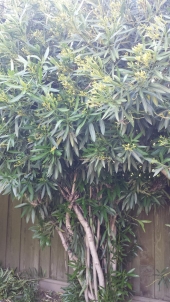


Garden Mastery Academy - Module 1: Dare to Dream
will be released to subscribers in:
soon!



 2
2




War Garden Farm

 3
3




Some places need to be wild
 5
5




Eric Hanson wrote:Kali,
Either manure will give it a recharge. It will be temporary, but it will work.
If you plan on dumping this into a garden bed on the soil, excellent! I would strive to get microbes in the soil. They will take care of most of your fertility needs indefinitely once established.
Eric
War Garden Farm










 5
5




Some places need to be wild




War Garden Farm










 4
4




Some places need to be wild




War Garden Farm
 2
2


















Some places need to be wild




War Garden Farm
 1
1




Kali Hermitage wrote:Apologies if this has been done to death, I haven't been able to find anything in my searches.
Do any of you with small backyard gardens have suggestions for recycling used potting soil? I have several pots worth of what was good soil that's used up, and my thought was to add chicken or steer manure along with other compost and use it on my beds as topsoil/mulch. Any issues with that or other suggestions?
Thanks!





Kali Hermitage wrote:Apologies if this has been done to death, I haven't been able to find anything in my searches.
Do any of you with small backyard gardens have suggestions for recycling used potting soil? I have several pots worth of what was good soil that's used up, and my thought was to add chicken or steer manure along with other compost and use it on my beds as topsoil/mulch. Any issues with that or other suggestions?
Thanks!
List of Bryant RedHawk's Epic Soil Series Threads We love visitors, that's why we live in a secluded cabin deep in the woods. "Buzzard's Roost (Asnikiye Heca) Farm." Promoting permaculture to save our planet.
 2
2




 2
2




 2
2








"The rule of no realm is mine. But all worthy things that are in peril as the world now stands, these are my care. And for my part, I shall not wholly fail in my task if anything that passes through this night can still grow fairer or bear fruit and flower again in days to come. For I too am a steward. Did you not know?" Gandolf




Kali Hermitage wrote:Thanks for the tip on the Wine Caps, lucky me to have a yard full of wood chips too :) I've had zero luck with oyster/shiitake mushrooms in logs...but Wine Caps in wood chips sounds much easier!
Blog: 5 Acres & A Dream
Books: Kikobian Books | Permies Digital Market
 2
2








Kali Hermitage wrote:
Do any of you with small backyard gardens have suggestions for recycling used potting soil?
Thanks!
I never make the same mistake twice.
I make it 5 or 6 times to make sure.
 1
1








Rob Millard wrote:I too am new to the gardening game so I'm wondering if mixing it into the compost pile & letting it regenerate there is a good idea?
"Also, just as you want men to do to you, do the same way to them" (Luke 6:31)








Intentional permaculture homestead in Boonville, CA




This is all just my opinion based on a flawed memory


|
Cats say "meow" because they think that is what people sound like. This tiny ad told me so:
The new kickstarter is now live!
https://www.kickstarter.com/projects/paulwheaton/garden-cards
|



